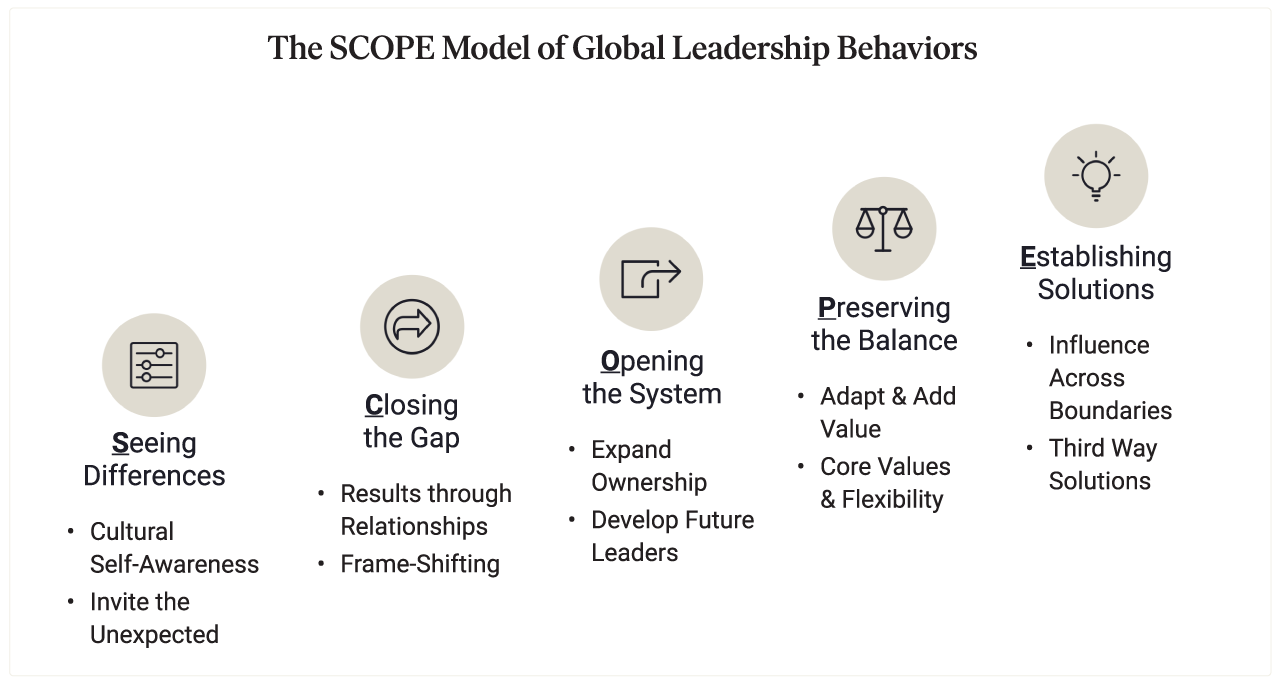All ten behaviors have stood the test of time and are still relevant, but three in particular stand out in today’s environment: Invite the Unexpected, Develop Future Leaders, and Third Way Solutions. Here is an updated definition of each of these three, focusing on several related transitions that are vitally important for leaders now.
1. Invite the Unexpected: The Transition from Subject Matter Expert to Change Leader
A typical pitfall for aspiring leaders is attempting to replicate prior patterns of success—a particular style of communication or problem-solving, insights into customer needs, or a favorite product solution—in a different business environment. The leadership behavior, “Invite the Unexpected,” enables greater flexibility in response to unfamiliar circumstances. With rapid-fire change becoming the norm, many forms of expertise are becoming outdated at a faster pace, making it even more vital to be able to anticipate and respond to both anticipated and unexpected changes.
To invite the unexpected today combines elements of market research, risk management, and scenario planning, all taking into account a highly interdependent set of global factors. Depending on the type of business you are in, there are numerous questions, both micro and macro, that you should consider. Larger examples of critical “what if” questions could be:
- What if we face a weather event of unprecedented magnitude?
- What if a pandemic recurs and we have to respond right away?
- What if our remote workers refuse to come back to the office?
- What if we have to offshore or reshore a key business function?
- What if a vital part of our supply chain becomes unavailable?
- What if our company’s advertising or DEI efforts are caught in the cross fire of political “culture wars”?
- What if the workers in one of our facilities at home or abroad seek significantly higher wages or union affiliation?
- What if our most dangerous future competitors are going to be companies whose names we barely know?
- What if a major geopolitical event occurs such as armed conflict between China and Taiwan or a wider war in the Middle East?
2. Develop Future Leaders: The Transition from Candidate to Coach
The term “high-potential leadership candidate” has long been common, and these candidates received a series of developmental opportunities designed to prepare them for top leadership positions. Annual corporate succession planning exercises typically review and discuss the job roles and leadership training programs that will support these candidates. While some companies still offer such opportunities, present-day leadership requirements have expanded, and now even first-line managers, who until recently were individual contributors themselves, are tasked with drawing out the talents and leadership potential of a highly diverse set of team members.
So instead of waiting until later in their career to become a coach or mentor, first-line managers frequently find that the leadership pipeline has been compressed to fewer stages which might also take place concurrently. In addition to accomplishing their immediate business goals or project objectives, talent development has become a significant part of their management portfolio as well, and they need to become familiar with techniques and tools they can use for this purpose. An estimated 90% of companies expect their managers to act as informal coaches, and this may be one cause for the continued rapid growth and high reported ROI of the global coaching industry, as managers seek coaching themselves.
3. Third Way Solutions: The Transition from Advocate to Catalyst
Being able to create and deliver a convincing proposal is a typical requirement for advancing to higher levels in the organization. Along the way, nearly every leader faces a decisive transition point at which they must be able not only to advocate for their own views or those of their department, but also to serve as a catalyst for bringing together different ideas and perspectives.
The “C” in VUCA signifying complexity means that any one person is less and less likely to have the right answer in the current environment, and requires the ability to listen to and integrate different views in order to arrive at the best possible solution. Christopher Bartlett and Sumantra Ghoshal once coined the phrase, “a matrix in the minds of the managers,” and this flexible mindset has become more relevant than ever in complex business settings as the glue that makes any organizational matrix work. A leader who is a true catalyst for change is able to inspire and drive collaboration across organizational silos, integrating ideas from different functions, lines of business, and locations.
Advances in information technology and the legacy of the pandemic have also placed a premium on the ability to lead a hybrid workforce that could be both in-person and remote. Most leaders struggle with “presence” in day-to-day interactions with employees who are co-located with them. The distractions of mobile phones, a daily deluge of social media, competing business priorities, and a relentless schedule can mean that they are not fully focused even on the person in front of them. This easily becomes a source of unintentional micro-inequities: showing up late for meetings, reading a text message in the middle of a conversation, or appearing to be distracted rather than fully present while a colleague is sharing the results of their work. Employees in remote locations frequently face an exaggerated version of these slights because they are also “out of sight, out of mind.”
Leaders who are effective catalysts make a very deliberate effort to include their colleagues who are remote. This could involve:
- Investing the time to build relationships and to sincerely ask how your counterpart is doing
- Blending group meetings with one-on-one conversations to encourage questions and dialogue
- Creating a “virtual water cooler” environment for sharing useful information in addition to delegating and tracking tasks
- Offering opportunities for networking or other forms of visibility with the wider organization
- Allocating travel budgets where available to facilitate personal connections
- Making the case in pay or promotion discussions for high performers who otherwise may be neglected
- Ensuring that the output of a team or business unit fully leverages the knowledge and skills of both remote and co-located members
Given today’s polycrisis environment and accelerated pace of change, both current and prospective leaders have a growing number of opportunities to refine their global leadership skills.
—
Download our latest white paper to learn even more about what is required of global leadership today.



